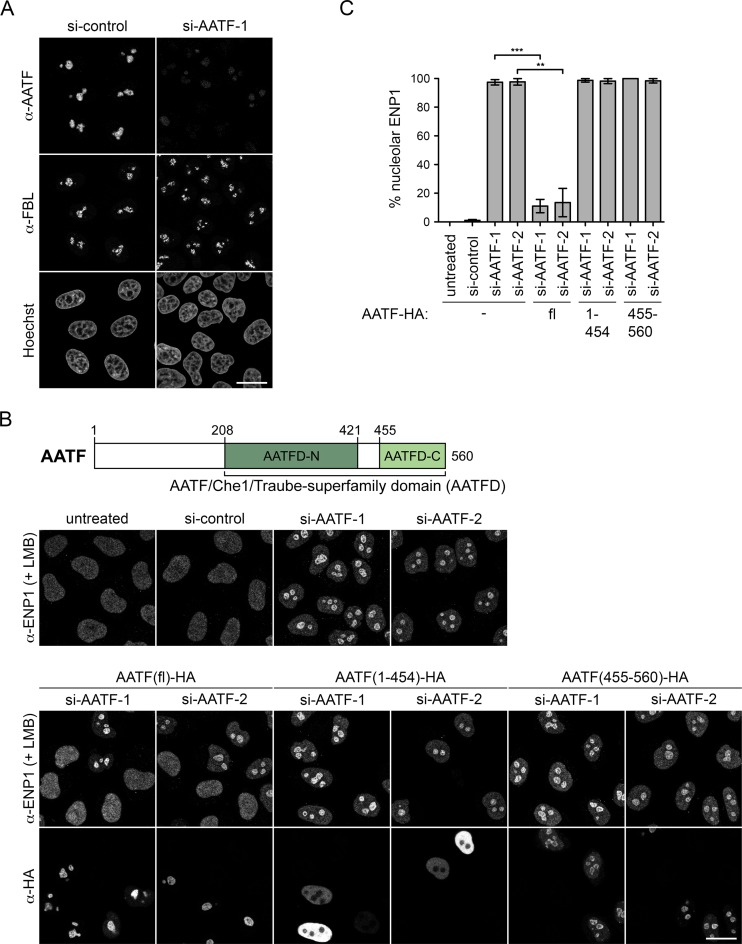Figure 2.
The C-terminal subdomain of human AATF is required for its nucleolar localization and for rescue of the RNAi-induced ribosome biogenesis defect. (A) Localization of endogenous AATF was analyzed by IF in HeLa cells together with the nucleolar marker FBL. Nuclei were visualized by Hoechst staining. Specificity of the anti-AATF antibody was verified by siRNA treatment for 72 h. Scale bar, 20 μm. (B) Illustration of protein domains present in AATF. The AATF protein contains an AATF/Che1/Traube-superfamily domain (AATFD) with an N-terminal (AATFD-N) and C-terminal (AATFD-C) subdomain. An AATF RNAi complementation experiment was performed in HeLa cells using two independent siRNAs transfected for 72 h. The indicated siRNA-resistant versions of HA-tagged AATF were expressed by transient transfection during the last 48 h. Cells were fixed after treatment with 20 nM LMB for 2 h. Localization of ENP1 was visualized by IF and used as readout for nucleolar release of 40S ribosomal subunits. Scale bar, 20 μm. (C) Quantification of RNAi-rescue experiments, performed as in (B), from three independent experiments. Mean intensity of the fluorescent signal derived from ENP1 IF was quantified in nucleoli and the nucleoplasm with ImageJ. To set a stringent threshold for the rescue, all cells with a ratio of mean nucleolar to nucleoplasmic ENP1 signal of ≥2.5 were assigned as ‘nucleolar’. Mean ± SEM (error bars); n ≥ 38; **P ≤ 0.01; ***P ≤ 0.001 (unpaired t-test). Note that AATF-HA full-length (fl) but neither AATF(1-454)-HA nor AATF(455-560)-HA significantly rescued the AATF depletion phenotype (for rescue, only cells transfected with AATF constructs were analyzed).

